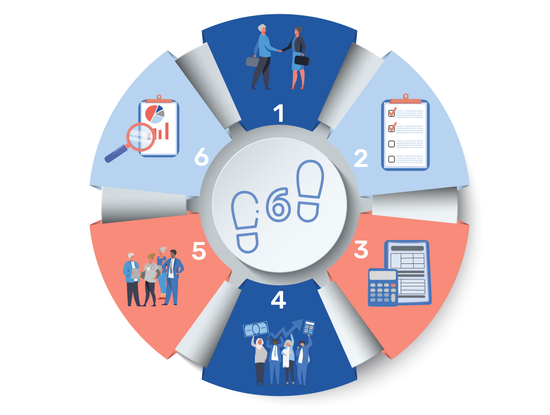
The aim of this course is to provide information on the “WHO implementation handbook for national action plans on antimicrobial resistance: guidance for the human health sector” and the 6 steps for sustainable implementation of NAPs on AMR. This course is intended for national/subnational policy-makers, technical leads and implementing partners working on the implementation of NAPs on AMR within the human health sector.
Language: English
English
Health topic
Course information
This course is also available in the following languages:
Overview
AMR is a growing global threat to public health and countries have developed NAPs to counter this threat. This course covers the 6 steps for sustainable implementation of NAPs on AMR from the “WHO implementation handbook for national action plans on antimicrobial resistance: guidance for the human health sector”. The 6 steps include:
- strengthen governance;
- prioritize activities;
- cost the operational plan;
- mobilize resources;
- implement prioritized activities;
- monitor and evaluate.
Guidance on a stepwise approach for each of the 6 steps, as well as existing WHO AMR tools and resources, is provided. This course is intended for national/subnational policy-makers, technical leads and implementing partners working on the implementation of NAPs on AMR within the human health sector. This includes national health authorities, members of the national/subnational multisectoral coordination mechanisms and/or technical working groups, senior technical AMR experts and policy-makers involved in implementing AMR activities at all levels of the health system, and implementation partners to accelerate sustainable implementation, monitoring and evaluation of NAPs on AMR.
Course duration
Approximately 2.5–3 hours
Certificate
A Record of Achievement certificate will be available to participants who score at least 80% in the final assessment.
Participants who receive a Record of Achievement can also download an Open Badge for this course. Click here to learn how.
What you'll learn
- list the 6 steps for sustainable implementation of NAPs on AMR;
- recognize the need for stepwise implementation based on the local context, available data and a participatory approach to identification and implementation of priority activities
- describe the importance of costing and budgeting prioritized activities of an operational plan;
- identify existing funding, funding gaps and map potential funders for resource mobilization efforts;
- be aware of a range of WHO tools to support implementation of prioritized activities;
- explain the importance of monitoring and evaluating progress in NAP implementation.
Course contents
Pre-training survey
Course introduction:
Welcome to this course on the 6 steps for sustainable implementation of national action plans on antimicrobial resistance. This course is introduced by Dr Hanan Balkhy, Assistant Director-General, AMR Division, WHO.Module 1: Introduction:
In this module, we will explore the background and purpose of the “WHO implementation handbook for national action plans on antimicrobial resistance: guidance for the human health sector”.Module 2: Strengthen coordination, collaboration and governance for NAP on AMR implementation:
In this module, we will explore steps to strengthen multisectoral coordination, collaboration and governance for NAP on AMR implementation.Module 3: Prioritize activities for implementation:
In this module, we will explore priority setting and learn how to prioritize activities for implementation as part of developing a timebound operational plan for the NAP on AMR.Module 4: Develop a costed operational plan:
In this module, we will look at how to create and cost an operational plan for implementing prioritized NAP activities.Module 5: Identify funding gaps and mobilize resources for implementation:
In this module, we will look at how to identify funding gaps and mobilize resources for NAP implementation.Module 6: Implement NAP on AMR activities:
In this module, we will look at how to sustainably implement NAP on AMR activities.Module 7: Monitor and evaluate the NAP on AMR implementation:
In this module, we will look at the process for monitoring and evaluating the NAP on AMR implementation.Module 8: Summary checklist for 6 steps for sustainable implementation of NAPs on AMR:
In this module, we will walk through the summary checklist for 6 steps for sustainable implementation of NAPs on AMR.Post-training survey
Course assessment:
There are 20 questions in this quiz-based assessment. The questions are a recap of the content covered in Modules 1 to 8. You must score 80% to pass.Course close:
Closing comments are provided by Mr Anand Balachandran, Unit Head, AMR National Action Plans and Monitoring, AMR Division, WHO Headquarters.
Enroll me for this course
Certificate Requirements
- Gain a Record of Achievement by earning at least 80% of the maximum number of points from all graded assignments.
- Gain an Open Badge by completing the course.